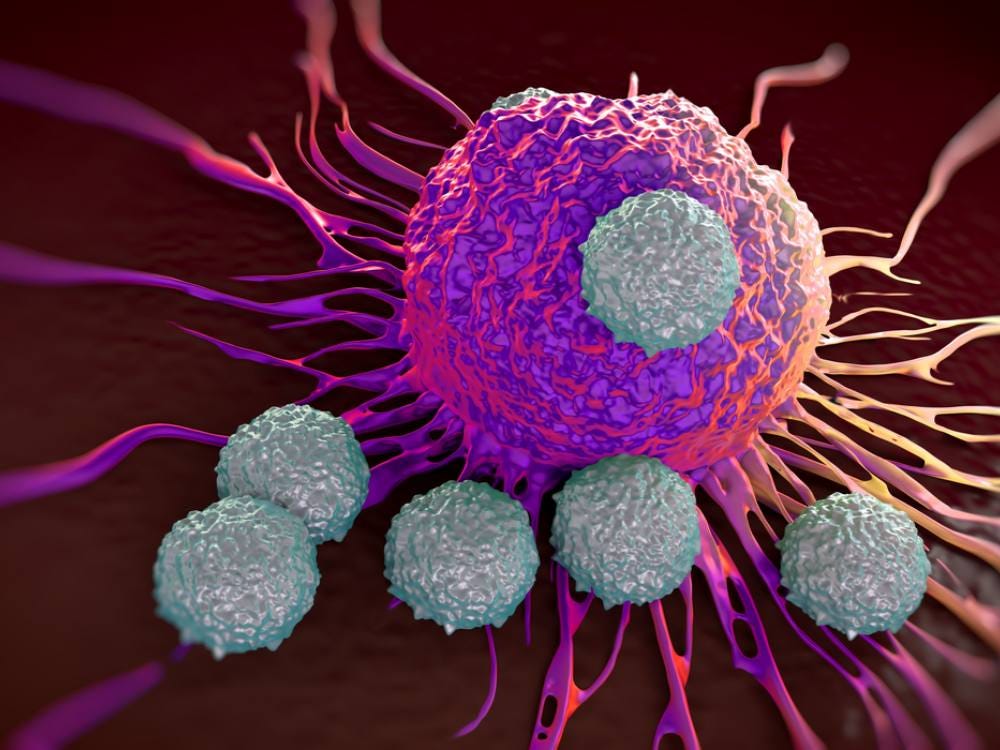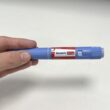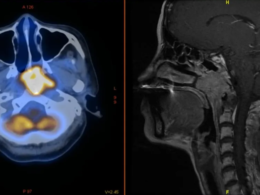This is a republication of the article “What If COVID Reinfections Wear Down Our Immunity?”, with the title above.
Dr. Anthony Leonardi is a lightning rod for debate. If he’s right, this pandemic poses a greater threat than widely assumed.
The Tyee
Andrew Nikiforuk
7 Nov 2022
Nearly three years into the pandemic, it’s clear early expectations about the behaviour of the coronavirus and its toll on our bodies have proven overly optimistic.
Recall those early days when experts broadly assumed that once we’d withstood an infection our immune systems would adjust and fully resist another reinfection.
And then hopes rose that mass vaccination would provide the path out of the pandemic. Although vaccines did reduce deaths and hospitalizations, the effort failed to produce herd immunity.
But researchers saw further promise in what they called hybrid immunity:
people who had been infected with COVID and then received mRNA vaccines would, it was assumed, develop a formidable protection through raised levels of antibodies (proteins made by the immune system to battle infection).
However variants emerged, capable of evading those antibodies.
Many people who had been vaccinated or already had endured a bout of COVID were experiencing “breakthrough infections.” What could put the brakes on this ever-evolving virus, which can kill, damage organs and linger for months?
The answer from many scientists has been T cells — our bodies’ line of immune defence after antibodies. T cells can spot and attack viruses and even remember previous invaders. As virologist Vincent Racaniello titled one of his articles: “T cells will save us from COVID-19.”
But what if COVID wears down T cells in people who get it, and does so increasingly with each reinfection?
That concern lies at the heart of a rolling, rancorous scientific debate, a lot of it conducted on Twitter.
A person at the centre of the storm, sounding alarms about T cell “dysregulation” since the early days of the pandemic, has been a U.S. immunologist named Anthony Leonardi.
A person at the centre of the storm, sounding alarms about T cell “dysregulation” since the early days of the pandemic, has been a U.S. immunologist named Anthony Leonardi.
By dysregulation Leonardi means three effects of COVID:
- The hyperactivation of many T cells, which can prematurely age them
- The exuberant function of those hyperactivated T cells, which can then cause organ damage
- The exhaustion of those hyperactivated T cells, which implies they aren’t winning the battle against viral proteins they are supposed to defeat.
In other words, argues Leonardi, T cells are becoming hyperactivated by SARS-CoV-2 and are prematurely aging, harming organs, and becoming exhausted trying to rid the body of an immune-evasive virus.
In other words, argues Leonardi, T cells are becoming hyperactivated by SARS-CoV-2 and are prematurely aging, harming organs, and becoming exhausted trying to rid the body of an immune-evasive virus.
If he is right, then no, we cannot assume that T cells will save us — not as thoroughly, at least, as we’ve been led to believe.
If he is right, then no, we cannot assume that T cells will save us — not as thoroughly, at least, as we’ve been led to believe.
Which is why The Tyee decided Anthony Leonardi and his controversial assertions merit a deep dive.
Leonardi’s critics say he paints too dire a picture. Some prominent researchers have accused him of being misguided, their tweeted insults scathing.
Reached by The Tyee, Leonardi did not apologize for the pessimistic edge to his warnings. “Optimism sells and optimism around T-cell memory sold well too.” Rather than practice a “passive conventionalism” that pretends the pandemic is over, he said, public health officials “need to be candid with the public.”
In a recent tweet Leonardi punched back at his most vociferous attackers, saying:
“All I have done is warn people and people find the warnings unpalatable. Not only that, people have given opinions on the trajectory of the virus and the immunology and have been blatantly wrong and are seeking a pound of flesh out of anger.”
To understand why Leonardi is such a lightning rod requires a bit more discussion about how the human immune system works. It is composed of two complementary branches: one directed by antibodies and another mediated by T cells.
T cells are one of two white blood cells that defend the body against foreign invaders. (The other are B cells, which make antibodies.)
The human body supports millions of both T and B cells.
T cells, which originate in bone marrow and then mature in the thymus, perform multiple different roles as the human body matures and ages.
Some T cells, for example, regulate the immune response while others directly bind to and kill cells infected by cancer or viruses. Others survey the body for signs of cancer. And some are simply “naive”: young cells not yet stimulated by an antigen.
Another group known as memory T cells can remember a foreign invader and lead the charge against reinfection.
T cells can also secrete chemicals that help B cells produce antibodies. As a general rule T cells protect against reinfection by providing durable memory of past invaders.
Which is why it’s a big deal if Leonardi is correct in his belief that COVID exhausts, ages and cumulatively wears down the immune system with each infection.
So who is Leonardi and how has he arrived at his convictions?
Leonardi will be the first to say he is no expert on COVID. The soft-voiced Californian, scientist, public health student and water polo player, wrote his PhD thesis on T cells in 2017 while working for the U.S. National Institutes of Health.
Leonardi will be the first to say he is no expert on COVID. The soft-voiced Californian, scientist, public health student and water polo player, wrote his PhD thesis on T cells in 2017 while working for the U.S. National Institutes of Health.
In particular his thesis looked at how T cells can be cultivated and fine-tuned to battle cancer.
He spent years studying healthy and unhealthy T cells.
So he knows a thing or two about how T cells work and how they regulate the immune system. And he has learned that science debates can be as rough and tumble as a water polo game.
He spent years studying healthy and unhealthy T cells.
So he knows a thing or two about how T cells work and how they regulate the immune system. And he has learned that science debates can be as rough and tumble as a water polo game.
And then along came the pandemic.
In the Twitterverse he was one of the first scientists to openly speculate about COVID’s ability to disarm the immune system.
He reasoned that a weakened immune system would have profound implications for the severity of disease, the effectiveness of vaccines and the health of the elderly over the course of the pandemic.
Given nearly five years of work on T cells, Leonardi got a bad feeling while reading a Lancet study that appeared at the beginning of the pandemic.
The study described the unhealthy state of the first patients in Wuhan, China.
Scientists noted that the virus had diminished the patient’s white blood cells — the ones responsible for fighting infection.
Moreover descriptions of the patients suggested that a blood infection might be contributing to shock and death.
That profile looked like a super antigenic infection whereby a particular molecule has set off an extreme immune response.
As a result the immune system began to attack the body, it appeared to Leonardi.
Lots of viruses can set off autoimmune reactions in select populations, but Leonardi thought COVID might have the potential to unsettle the general health of the globe, and even change life expectancy patterns.
Readings on the long-term health impact of the original SARS virus and its cousin MERS also alarmed Leonardi.
These pathogens also disrupted the immune system. MERS, for example, not only infected and killed the cells lining blood walls but T cells as well. Both SARS and MERS could overcome the defences of the immune system, and result in prolonged chronic illness that lasted years.
To Leonardi the ramifications seemed highly significant. It meant that repeated waves of COVID infection might not leave durable or competent memory to fight reinfection or to clear the virus. Repeat infections could get worse over time resulting in more death, organ damage and long-term disability. He started writing letters to school boards and issuing warnings about his conclusions based on his extensive readings.
As Leonardi gained more followers (and detractors) on Twitter, someone created a “Dr. Leonardi’s translate bot.” Its tweets offered translations of the medically esoteric language Leonardi often employs. “Good afternoon humans, powered up and ready to parse some Leonardi,” reported the bot.
Meanwhile Leonardi’s Twitter account went from nothing to more than 70,000 followers, and became a battleground of debate between those who said we were on the downside of the pandemic and taking appropriate measures and those who said our attitudes and policies were dangerously cavalier. The dispute is far from decided.
The uproar reached a fever peak this year when Leonardi speculated that repeated COVID infections could exhaust T cells in people 50 years or older leading to a blunted immune response. (Chronic infections such as HIV or Epstein-Barr virus typically exhaust T cells.)
Leonardi first offered this opinion in August 2020 but it gained currency as reinfections skyrocketed with Omicron.
So, too, did the naysaying. Early this year, Vincent Rajkumar, the editor of Blood Cancer Journal, called the idea “nonsense,” as did U.S. virologists Vincent Racaniello and Amy Rosenfeld.
In January, sociologist and New York Times writer Zeynep Tufecki implied Leonardi was a solo outlier not to be trusted, tweeting:
“Reminder that not every crank is Galileo. Yes, experts can be wrong, even a field can be wrong — we saw with airborne — but challenges involve *groups* of actual working, publishing scientists.”
One of the barbs often tossed at Leonardi by critics is that he is not ensconced in a lab churning out results from experiments, so he doesn’t really belong to the club of researchers seriously trying to crack COVID.
Leonardi is in fact a PhD accredited immunologist currently pursuing a master’s degree in public health.
One high-profile T cell expert among Leonardi’s harshest critics is Duke University scientist Antonio Bertoletti, who often ends his Twitter posts with “Go T Cells Go.”
On Twitter he posted a Nature study on health-care workers claiming that it showed that “exposure [to COVID] broadens T-cell repertoire,” and that there was no problem with exhaustion.
However, the paper only looked at working age people and did not include individuals with long COVID in which chronic and persistent infection inflames the immune system.
And so the debate, like the pandemic, keeps rolling along.
Among Leonardi’s defenders is University of Guelph evolutionary biologist T. Ryan Gregory, who calls him a “brave” voice, sober and brilliant.
“His arguments threatened to undermine the narratives of those people minimizing the pandemic,” Gregory told The Tyee. “If previous infection dampens the immune system and does not strengthen it, it undermines the popular notion that we should let the virus rip.”
Yaneer Bar-Yam, an acclaimed complexity scientist, pandemic expert and director of the World Health Network, agrees.
“The reasons Anthony was so broadly attacked was because he undermined the position that once you’ve been infected, you don’t have to worry again.”
Added Bar-Yam: “He recognized early on that our idea of how the immune system should work with a virus, wasn’t going to be the case with COVID, and he was right.”
Toronto emergency physician Kashif Pirzada has been following Leonardi’s take on COVID and initially didn’t want to believe his predictions on T cells.
“But they have stood the test of time and are now being confirmed by multiple lab studies.”

LEONARDI’S TRACK RECORD
So how valid are Leonardi’s warnings proving to be as research on COVID and immune responses has mounted? Let’s look at six key issues, comparing his statements with what the scientific literature now says or suggests.
For starters, Leonardi warned that the virus undermined and aged the immune system by hyperactivating and exhausting T cells. This overstimulation could in turn damage organs including the heart, brain and kidneys.
He predicted that the pandemic would reduce life expectancy around the world, most harming people aged 50 and over.
He hypothesized that the virus, by harming the immune system, could make people more vulnerable to other infections and cancers.
He speculated that COVID reinfections could be big trouble and should be avoided.
Given the virus’s ability to undermine and age the immune system, he argued that exposing children repeatedly to a virus that impairs the immune system and causes vascular disease and brain shrinkage was bad policy.
And, very early in the pandemic, he argued that herd immunity was wishful thinking and could not be achieved.
- 1.Immunity and exhausted T cells
- 2. Vulnerability related to age
- 3. The ‘Leonardi Effect’ for other pathogens
- 4. Repeated reinfections
- 5. Suffer the children
- 6. Herd immunity

1.Immunity and exhausted T cells
When many experts presented COVID as another flu-like bug that only dispatched the old or unwell, Leonardi posited a radically different take. In 2020 he offered a controversial explanation for the acute disease and organ damage seen in some adults and children with multisystem inflammatory syndrome. He suspected that the virus was hyperstimulating T cells in a number of ways. As a result, the virus was somehow causing the immune system to attack the internal organs.
In 2020 Leonardi wrote the first of several peer-reviewed papers for Frontiers in Immunology and elaborated on his hypothesis, positing that COVID is a “lympho-manipulative pathogen, which… creates a dysfunctional immune response.” In other words the virus damages T cells so severely that COVID not only undermines the immune response for COVID but perhaps other pathogens as well.
Or as the “Dr Leonardi translator bot” put it: “Dr. AJ’s followers understand that T cells are a valuable part of the human immune arsenal, but COVID distorts their function to induce autoimmunity.”
The widely read paper attracted much scorn but also thoughtful attention and calls for further exploration. “If proven right, it may provide some serious jolts to our understanding of immune responses against the SARS-CoV-2 virus and may have some serious implications as far as protection against severe COVID-19 is concerned,” wrote two researchers in the Expert Review of Vaccines in 2022.
So what does the evidence now say?
One of the first hints that COVID could severely mess with the immune system, particularly in severe cases, came in a small study that autopsied 11 people who died of the infection in the summer of 2020. The dead didn’t have so-called germinal centres or places in the spleen and lymph glands where immune cells learn how to mount a long-lasting attack against a biological invader.
In other words the immune system didn’t do what it is supposed to do: successfully defeat the infection.
In 2021 the Journal of Clinical Investigation confirmed that changes in T-cell activation and exhaustion were notable in non-hospitalized patients. Moreover the evidence suggested “a prolonged period of immune dysregulation” after infection.
In November 2021 a group of Italian researchers studied the immunological character of patients recovering from acute disease after hospitalization. They, too, found what Leonardi predicted in 2020: exhausted T cells. In fact the immune system of these patients was not only beat up but suffered a number of other abnormalities that the researchers characterized as a “deranged immune profile.” This immune weakness persisted months after infection but could be restored with the administration of a protein called PD-1 Blockade.
Other scientists found that mild COVID infections can damage the immune system. British and U.S. researchers looked at the state of T cells in patients who had mild, severe and no COVID. What they discovered surprised them and appears counterintuitive. Patients with severe disease appeared to have competent T cell memory to fight off reinfection while mild cases suffered from T cell exhaustion. Exhausted T cells lose their ability to fight off viruses or cancer for that matter.
“People who have severe disease are likely to end up with a good number of memory cells,” said Dr. Pandurangan Vijayanand at the La Jolla Institute for Immunology. “People with milder disease have memory cells, but they seem exhausted and dysfunctional — so they might not be effective for long enough.”
Australian researchers have reported similar intriguing findings after looking at the blood profiles of patients suffering from long COVID and comparing them to healthy controls. They found that “immunological dysfunction persisted for eight months after mild to moderate” infection including indicators of “chronic T cell activation and potentially exhaustion.” They also found that people with long COVID were missing naive T cells, just as Leonardi had warned.
Nobel laureate and Australian immunologist Peter Doherty speculated that these preliminary findings “could reflect a continuing confrontation between persistent virus and immune cells and antibodies that are trying to eliminate it from our bodies, but are not quite succeeding in doing so.”
In 2022 a Chinese study reported that COVID infects and kills T cells contributing to immune dysfunction that favours viral persistence in the body. Two researchers commenting on the study’s implications noted that infected T cells “are not only compromised in their ability to control viral infection, but they can also transport viruses to other parts of the body through the bloodstream, causing the spread of infection, affecting various organs and parts of the body.”
Other prominent immunologists have begun to explore the same territory.
Yale immunologist Akiko Iwasaki has hypothesized that long COVID can be caused by persistent virus infection, viral remnants or an autoimmune reaction. In a recent study that closely looked at the immune systems of 99 patients with long COVID, Iwasaki’s team found exactly what Leonardi had first hypothesized: exhausted T cells that suggested the patients were fighting an active chronic infection. The strength of T-cell exhaustion also corresponded with the reactivation of Epstein-Barr virus in patients.
In many respects people with long COVID closely resemble patients with chronic fatigue syndrome — another form of immune dysregulation brought on by chronic viral infection.

Just last month Swedish researchers confirmed again what Leonardi speculated about two years ago: that people with severe COVID showed long-lasting effects on the immune system for seven to eight months. “The effects on the T cells of the immune system are interesting and mixed,” reported virology professor Marie Larsson in the department of biomedical and clinical sciences at Linköping University, and leader of the study.
“Some of them are still activated long after the disease episode, while others are ‘fatigued’ and cannot function normally. We see similar effects on patients with a chronic HIV infection. The question is: why are these effects still present after so long?” asked Larsson.
The drug company Merck now lists COVID as a major cause of lymphocytopenia: the destruction of white blood cells including T cells.
Last June a trial of a new drug Abatacept, which directly blocks the activation of T cells, prevented deaths in severe COVID patients.
Even Leonardi-slamming Antonio Bertoletti recently offered a more nuanced perspective on T cells and COVID in the publication Immunity than he has on Twitter.
“
It is therefore possible that mechanisms of functional dysregulation in T cells might drive the exacerbated inflammatory events that characterize severe COVID-19 and even some aspects of the prolonged pathology observed in some COVID-19 convalescents.” He does not mention Leonardi.

2. Vulnerability related to age
In July 2020, six months before COVID vaccines became available and long before we learned the virus would evolve to achieve “breakthrough infections” despite vaccines, Leonardi voiced this grim concern:
“
In the worst case scenario, in a situation where this virus sufficiently mutates and perpetuates, I fear a world where most of the aged succumb to complications of COVID.”
Many life expectancy experts said such speculation was ridiculous. (They have since deleted their tweets.) At the time they argued that a virus that resembled flu couldn’t do that kind of population-level damage.
But Leonardi reasoned that COVID caused more death than flu, and he noted that the immune system performed at its peak when people are in their 30s declined when people entered their 50s. COVID’s impact on the elderly was worrisome, he noted in 2020, “because as we age, we don’t produce many, if any, T cells…. You can’t turn the clock back on T cells. Too many challenges, and they exhaust and senesce. Not to mention, the virus will mutate and escape without vaccines.”
Turns out that Leonardi was right again.
A recent and prominent scientific paper confirmed that the age of 50 is indeed an inflection point for COVID deaths. It posited that the loss or narrowing of T cell diversity in response to infections might explain why.
In one recent tweet Leonardi asked his readers, “Do you all have any idea of what you’ve lost. So goodbye to the golden years…. I told you so.”

3. The ‘Leonardi Effect’ for other pathogens
If COVID can dampen an efficient immune response and activate other latent pathogens (everything from shingles or Epstein-Barr virus), could it impair a person’s ability to fight other pathogens as well? Leonardi wondered this in 2020.
In other words, might the pandemic have the unwanted effect of suppressing immune systems generally resulting in greater vulnerability to other viral, bacterial or fungal infections — and as a result accelerating their spread?
Dr. David Joffe, an Australian physician, dubbed the idea the “Leonardi Effect.” He thought it explained “the widespread availability of previous quiescent diseases, more available in lots of flavours.”
The evidence shows the idea is not far-fetched. In fact the scientific literature brims with accounts of viruses and bacteria behaving strangely in the wake of the COVID-19 pandemic. The U.S. Centers for Disease Control and Prevention, for example, noted a recent increase in severe respiratory illness requiring hospitalization in children caused by a normally benign enterovirus. U.S. hospitals have also reported admitting children with an unusual array of two and even three respiratory infections — all at once. They also appear more tenacious.
Monkeypox, a rodent virus nominally confined to Africa, has made an unusual pandemic dash around the world. Polio has resurged in New York and London. A Coxsackie virus erupted in India this year creating unusual tomato-sized rashes. A severe hepatitis emerged and mysteriously affected the livers of more than 1,000 children, leading Chinese scientists to suspect Omicron infection might have increased the risk.
Non-viral infections have also been on the rise. The U.S. Centers for Disease Control reported a 15 per cent increase in antimicrobial resistance in hospitals in the first year of the pandemic. Some researchers have speculated that a rash of fungal diseases that have plagued COVID patients may in part be due to depleted T cells. They are known to play a vital role in the adaptive immune response against fungal infections.
There, too, has been an inexplicable rise in brain infections among children. A 2022 survey of 109 U.S. hospitals found a 236 per cent leap in bacterial brain infections since the beginning of the pandemic. Some were treatable with antibiotics while others required surgery. Researchers speculated that bacteria in the mouth and nose might travel to the brain as COVID weakens the immune system.
As a consequence an increasing number of scientists take the idea of immune suppression in the wake of COVID infections very seriously. A Public Health Ontario brief warned earlier this year that “a potential increase in acquired impaired immunity in the Ontario population could have significant impact on the incidence and associated burden of infectious diseases… and other conditions in the longer-term.”
Microbiologist Brendan Crabb, director of Melbourne’s Burnet Institute told Bloomberg that he’d be surprised if COVID didn’t have an effect on the infectiousness of other diseases given its documented impairment of the immune system in long COVID patients.
“
You’ve got the best part of 100 million to half a billion people in the world who are very changed in their capacity to respond to viruses,” Crabb told Bloomberg. “There’s no way that can mean business as normal for microbial ecology.”
Crabb spelled out three different consequences. Immune suppression from COVID could worsen symptoms for other pathogens; change the transmission behaviour of other viruses and even create chronic carriers for different diseases.
So evidence grows that the “Leonardi Effect” is real.

4. Repeated reinfections
At the beginning of the pandemic reinfections occurred rarely. But that reality changed with the emergence of Delta and then Omicron, both highly immune-evasive variants.
While more and more people got reinfected many virologists responded to the trend by saying that it wouldn’t be a problem. Infection or reinfection with a mild flu-like virus would only boost our immunity, they added. Moreover people need to expose themselves in order to keep their immune systems primed and in good working order.
In November 2020, virologist Angela Rasmussen wrote in the Guardian that COVID was “not an anomalous virus capable of miraculous feats of immune evasion” and that our immune systems were handling the virus in their usual ways.
But Leonardi took a different view. He didn’t view COVID as a novel virus with a few unpleasant side effects but as a virus with intrinsic severity. If T cells are damaged by the first infection, then the second infection might not be beneficial and could in some populations drive the immune system into dysfunction.
He also noted that repeated viral infections didn’t always boost or improve immunity. Dengue reinfections, for example, were much more severe on the second go than on the first. In August 2020 he advised people to get the vaccine and avoid infection.
“
If you don’t understand what causes severe disease in COVID-19, you won’t be able to imagine what might happen in reinfection,” he explained in one interview last year. “We’re seeing a T cell response that is late and over-responsive because COVID enters the body undetected until it’s too late.”
With reinfections, Leonardi feared that people could prime their body to only recall existing immune memory and mount poor immune responses to new variants. As the Dr. Leonardi translation bot noted: “Dr. AJ has warned that we’re setting people up for organ damage and loss of vital function. The harm could be irreversible.”
Growing evidence supports Leonardi. A preliminary (preprint) study in 2022 by U.S. researcher Ziyad Al-Aly found that reinfections were associated with higher risk of bad outcomes. In other words people who had second or third COVID infections had significantly higher rates of everything from heart disease to kidney disorders during the first 30 days of infection, as well as in the six months that followed, than people with just one infection.
Al-Aly didn’t find that reinfections necessarily resulted in worse symptoms compared to the first infection. But his study pointed to added and significant risk. In other words a reinfection may push vulnerable people depending on their age and health into severe complications, fibrosis and organ damage.
A paper in Science by the British immunologist Danny Altmann also questioned the efficacy of reinfections dogma. His study sent shock waves through the scientific community because it found that infection with COVID provided “no immune boost” for triple-vaccinated health-care workers. People with second infections also showed significantly poorer T cell response to the first variant they were infected with. “Even having had Omicron, we’re not well protected from further infections,” said Altmann.
Then a Danish study documented the same phenomena: rising reinfections with Omicron due to waning or no durable immunity. In some cases people got reinfected within three weeks and the average was 22 weeks. As one science explainer put it: “The findings indicated that primary infections with non-Omicron variants of concern were inadequate in providing immune protection to prevent reinfections with Omicron.”
A new Chinese study has raised even more concerns. It shows that people with breakthrough Omicron infection from new variants following vaccination have reduced antibody breadth and antibody neutralization. Even effective treatments are neutralized.
“
So where is the acknowledgement that infection is actually reducing breadth of antibodies and reducing the neutralizing response?” now asks Leonardi.
“
Whoever says continued exposure is better for the individual and the antibody responses stands contrary to the new data and is overly optimistic,” Leonardi told The Tyee. “It is this unbridled optimism about infection and the immunity it confers that helped get us into this complete mess.”

5. Suffer the children
When Omicron emerged last year and exploded through schools many public health authorities argued that the infection was mostly mild, inescapable or nothing to worry about.
Leonardi vehemently disagreed. He even wrote letters to school boards explaining his concerns. He argued that vaccines conferred better immunity than the substantial risks carried by natural infection including long COVID and brain damage in children.
He also warned that catching COVID “every one or two years” is not wise or just for children. “It is a virulent SARS virus not a common cold and has evolved to become more severe.” As such he argued for masks, better air filtration and vaccines for children.
To Leonardi, just assuming that an infection won’t have long-term consequences in adults or in children didn’t seem to be good public health policy. “I know from what I’ve read in the studies that have come out that some people are going to definitely be genetically susceptible to very bad outcomes and death,” he said a year ago in an interview. “And I think it’s not right for kids to be just exposed to this without a fighting chance, without vaccination.”
Every day the research on COVID’s effects on children grows more expansive. One of the big issues is increased risk for diabetes among children after infection, one journal calling it an “inauspicious trend.”
Another big issue remains neurological complications. They can affect one in 12 children hospitalized with COVID-19 and “ have a significant impact” on their lives.
Given these risks some jurisdictions have adopted the precautionary principle and now sound like Leonardi. Take Karl Lauterbach, Germany’s federal health minister. He recently defended his decision to mandate masks in schools this fall, saying “Infecting an entire generation is irresponsible. We don’t yet know what this infection does to children’s immune systems when it occurs repeatedly.”

6. Herd immunity
Early in the pandemic many experts championed something called herd immunity as civilization’s ticket out of the pandemic. If only the majority of people got infected with COVID or vaccinated, then their immunity would stop the circulation of the virus, and deprive COVID of new hosts.
Leonardi, however, warned that herd immunity couldn’t be achieved with coronaviruses. They weren’t stable like polio or the measles virus but highly volatile and constantly mutating. Nor were they a one and done virus.
Leonardi opined in September 2020 that for this virus, “herd immunity does not exist.” Instead we’d get something “like endemic COVID where waves and waves of infection producing results five times worse than the flu.”
He added that new variants would likely get better at immune invasion and that vaccines, however good at reducing death and disease, would not be able to prevent infection and the cycle of transmission.
He explained that the only reason for catching an illness is to help your immune system so it can deal with it better when you’re older and more vulnerable to bad outcomes.
But, some infections don’t generate good immune memory, so the infection has no benefit. He classified COVID as one of those nasty infections.
Leonardi wasn’t alone in making such arguments. The U.S. virologist William Haseltine issued similar warnings given the nature of coronaviruses.
Against such predictions, the chorus of optimism proved much louder. Regardless, in April 2021, Leonardi stated there would be “no collective immunity by infection” because “each incidence of infection is a net negative and a poison pill. It resets the tally of immunity by contributing to evolution and immune escape.”
The scientific consensus now clearly supports Leonardi. Neither infections nor vaccines achieved herd immunity because of the immune-evasive nature of the virus. Most scientists now regard the concept of herd immunity as a mirage. Noted evolutionary biologist Gregory: “And Kudos to Leonardi. He was right about herd immunity.”
In a June 2022 tweet Leonardi gave his characterization of the brouhaha in a tweet:
I am certainly not Galileo
The only reason my opinions were controversial was because the West chose to deny reality and assume herd immunity by infection was possible, and scientists hungry for power corroborated its pursuit
– Anthony J Leonardi, PhD, MS (@fitterhappierAJ) June 6, 2022

PROPHET OF THE FOREVER PLAGUE
The record shows that Leonardi has been remarkably prescient, constant and often correct.
Yes, his thesis about exhausted T cells and immune dysfunction still remain a working hypothesis.
Still, there is much evidence that the virus is causing widespread immune dysregulation in both mild and severe cases.
Herd immunity, as Leonardi predicted, remains a fiction.
Reinfections have been associated with worrisome outcomes in a highly touted study.
The Leonardi Effect may well explain a surge in bacterial, viral and fungal infections after waves of COVID.
The risks to children remain grave in the absence of masks and good air filtration and ventilation.
As he sees such findings accumulate, how does Leonardi feel? “Disappointed, because most scientists did not fully appreciate the likelihood of such rapid antigenic evolution, so now we are awash with a deadly virus with many disabled, and it will continue to bring more people to their knees,” he told The Tyee.
He does not know when the pandemic will end.
He suspects an excellent nasal spray vaccine combined with long-term changes to public infrastructure to clean the air could reduce COVID’s menace.
He suspects an excellent nasal spray vaccine combined with long-term changes to public infrastructure to clean the air could reduce COVID’s menace.
Until then evolution may have the upper hand as the virus becomes more skilled at evading the immunity prompted by previous COVID infections and vaccine shots.
Until then evolution may have the upper hand as the virus becomes more skilled at evading the immunity prompted by previous COVID infections and vaccine shots.
By no means has Leonardi escaped the storm of controversy that has swirled around him since the early days of the pandemic.
But as more is known, he sees no reason to back away from his assessment of what we face — and how we should respond.
“Infections and reinfections indeed have a cumulative effect on the virus,” he explained to The Tyee. The effect is to propel the evolution of the virus to the extent that it can better “escape immunity from the infection it previously caused.
“Infections and reinfections indeed have a cumulative effect on the virus,” he explained to The Tyee. The effect is to propel the evolution of the virus to the extent that it can better “escape immunity from the infection it previously caused.
“Let me put it another way,” he continued. “On the whole, for the population of our planet, infections have conferred more immune escape via evolution rather than immunity. So infections have been more of a boon for the virus rather than our immunity.”
“Let me put it another way,” he continued. “On the whole, for the population of our planet, infections have conferred more immune escape via evolution rather than immunity. So infections have been more of a boon for the virus rather than our immunity.”
About a year ago the epidemiologist Larry Brilliant, who led the charge against eradicating smallpox, warned the world that COVID would be “the forever virus.”
And that’s how Leonardi now sees it, too.
About a year ago the epidemiologist Larry Brilliant, who led the charge against eradicating smallpox, warned the world that COVID would be “the forever virus.”
And that’s how Leonardi now sees it, too.
Early opportunities to stop COVID in its tracks were missed, he says, “because we have been too daft” as societies to take rigorous precautions to avoid its spread.
And yet, it remains key for each of us to wear masks, keep socially distanced, and inhabit spaces lightly populated with good ventilation, if only, by Leonardi’s analysis, to stave off reinfection given the chance that each one grinds down our immune systems.
And yet, it remains key for each of us to wear masks, keep socially distanced, and inhabit spaces lightly populated with good ventilation, if only, by Leonardi’s analysis, to stave off reinfection given the chance that each one grinds down our immune systems.
In recent weeks U.S. virologists such as Jeremy Kamil have expressed little concern about recent hospitalization rates in Europe and new immune-evasive variants.
Kamil, for example doesn’t expect “a catastrophic” wave from “antibody-evasive convergent variants” in the future.
Anthony Leonardi, naturally, begs to differ.

Originally published at https://thetyee.ca.
About the author
Tyee contributing editor Andrew Nikiforuk is an award-winning journalist whose books and articles focus on epidemics, the energy industry, nature and more.
About the specialist
Dr. Anthony Leonardi, Californian, scientist, public health student and water polo player, wrote his PhD thesis on T cells in 2017 while working for the U.S. National Institutes of Health.
Some names mentioned
New York Times writer Zeynep Tufecki
Duke University scientist Antonio Bertoletti
University of Guelph evolutionary biologist T. Ryan Gregory, who calls him a “brave” voice, sober and brilliant.
Yaneer Bar-Yam, an acclaimed complexity scientist, pandemic expert and director of the World Health Network
Toronto emergency physician Kashif Pirzada












